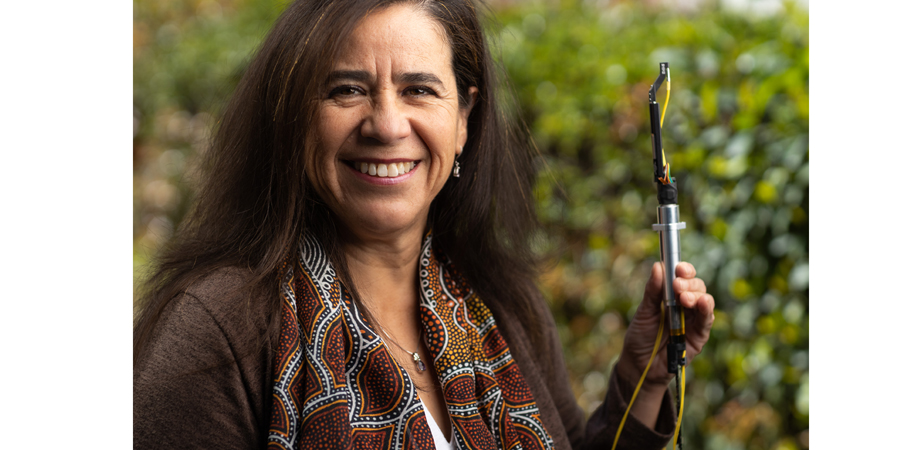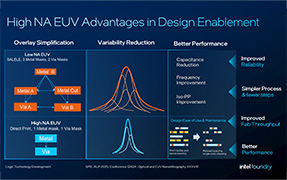Moving ahead with the Sloan Digital Sky Survey-V

“It is an awesome project and I feel quite honored to play a role in it,” says Carnegie Observatories astronomer Solange Ramirez about the Sloan Digital Sky Survey-V (SDSS-V), the first dual-hemisphere, multi-epoch, optical and infrared astronomical survey providing multi-object and integral field spectroscopy across the Milky Way and other galaxies.
Ramirez, project manager for the SDSS-V, will be part of a plenary panel at SPIE Astronomical Telescopes + Instrumentation in Montréal discussing the project’s new instrumentation, including a new three-element, wide-field corrector for the SDSS 2.5m telescope; dual multi-fiber robotic focal plane systems; and a new facility with four small telescopes and three fiber-fed optical spectrographs for integral field observations.
What are some of your responsibilities as project manager for the Sloan Digital Sky Survey V at the Carnegie Observatories?
My main responsibility is to plan, oversee, and monitor project work and to develop and track the schedules, budgets, and risks. The project is organized into 15 groups depending on the tasks that we need to accomplish. Our groups are building new instrumentation, upgrading existing instruments, operating the observatory sites, and working on the data collection, science research, and archiving. Most of my time is spent working with the groups performing instrumentation building and upgrades. My responsibilities also include management of major contracts and work agreements with partner institutions, organization of peer reviews, generating reports for our funding agencies, and representing the project at meetings and conferences.
What are some of the changes and updates you’ve seen with the project since you joined in 2018?
When I joined the project, we were in the planning phase: our instruments were a set of specifications and drawings, and our teams were iterating on their designs and going through reviews. Four years later, we have one instrumentation piece commissioned and in operations (the 2.5m Sloan Telescope Corrector), one instrument finishing commissioning and already collecting science data (the Focal Plane System at the north site, the Apache Point Observatory), one instrument on the way to its site (the Focal Plane System at the south site, Las Campanas Observatory), and one new facility under construction (the Local Volume Mapper Instrument [LVM-I] at Las Campanas Observatory). As a project, we are successfully transitioning from the instrumentation-building phase into the science-operations phase.
What are some of the challenges faced by the SDSS-V? How are they being met?
The pandemic hit our project at a critical phase where most of our new instrumentation was being built in different places around the globe. As everybody else, we had to quickly move into a new way of working, mostly at home. Most of our team meetings were already happening online because our team is geographically distributed. Nonetheless, instrumentation gets built in labs, which were suddenly closed down. We responded to the challenge by tracking very closely the situation at our partner institutions, by interacting with partner institutions and vendors to find ways to continue work within new guidelines and procedures, and by finding creative solutions for team interactions.
How does the SDSS-V differ from its predecessors?
SDSS-V is opening a new era in the way multi-object spectra are collected for the survey. For about 20 years, SDSS have been acquiring spectra by directing the astronomical object's light into spectrographs through fiber optic cables plugged into holes in aluminum plates. Each hole corresponds to an object's position in the sky and is drilled with high precision to allow capturing its light. SDSS-V is replacing the plugged plate system with a system of fiber positioners capable of performing faster configurations for a more efficient way of data acquisition. SDSS-V will also have optical and near infrared spectroscopic capability at both hemispheres, as well as a new facility for integral field spectroscopy (LVM-I).

Solange Ramirez holding one of the traditional Sloan aluminum plates at the plate-plugging lab at Apache Point Observatory. Credit: Courtesy of Solange Ramirez
What are some of the aspects of this project that excite you the most?
Experiencing first-hand how a set of drawings becomes an actual instrument is extremely exciting. It is the process of an idea being materialized into an object that performs as expected. It is also the product of a team of experts working together by creating something unique, which will advance our knowledge of the universe. This is a constructive aspect of our human nature, which is so important to highlight when humanity is faced with such a range of problems to solve.
SDSS-V is described as “the world’s first all-sky time-domain spectroscopic survey” How does this advance space mapping and space exploration?
SDSS-V will obtain millions of spectra of stars, black holes, and the interstellar medium. The stellar spectra will be used to derive important stellar parameters, including detailed abundances and velocities to study the chemical and kinematic evolution of the Galaxy. The black hole spectra will be used to study their growth processes and evolution. The interstellar medium spectra will be used to study the interaction between stars and gas and probe galaxy-formation mechanisms. All of these are topics of active research within our community and hence our data will be of high impact in advancing knowledge in the field.
What do you see as the future of space mapping and space exploration?
The future will be shaped by the development and implementation of new technologies. These new technologies will push the limits to detect fainter objects and finely characterize a larger number of known objects. Technology development is expensive and time consuming. We will only succeed with an appropriate level of funding which will allow the materialization of novel ideas and generation of the technical expertise to face further challenges.
What would you like attendees to the panel discussion to know or learn about the SDSS-V?
SDSS-V is already taking science data and all SDSS-V instrumentation will be in operation within a few months. For the instrument builders, the task is almost done. For the science teams, the fun is just starting!
| Enjoy this article? Get similar news in your inbox |
|



